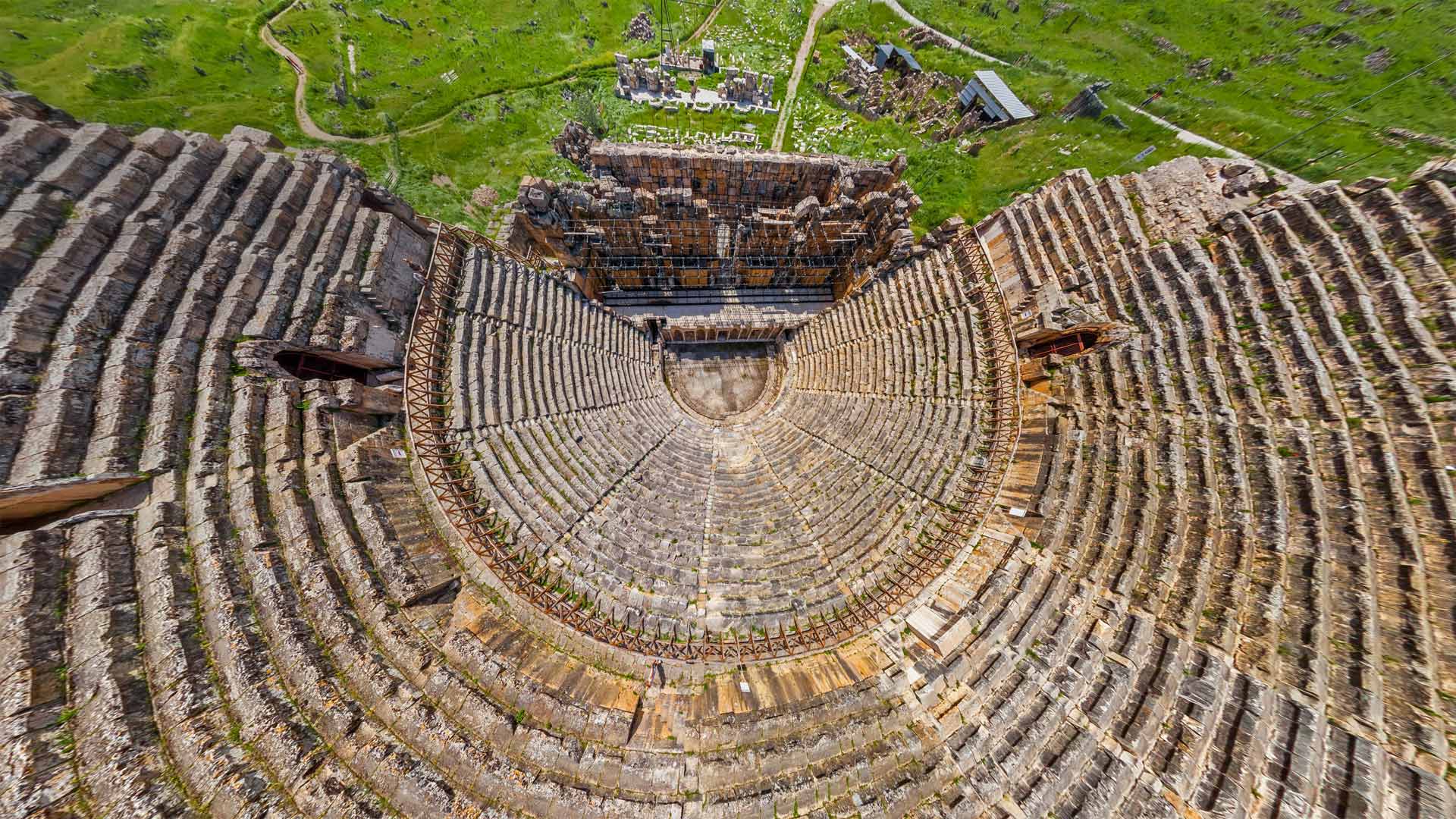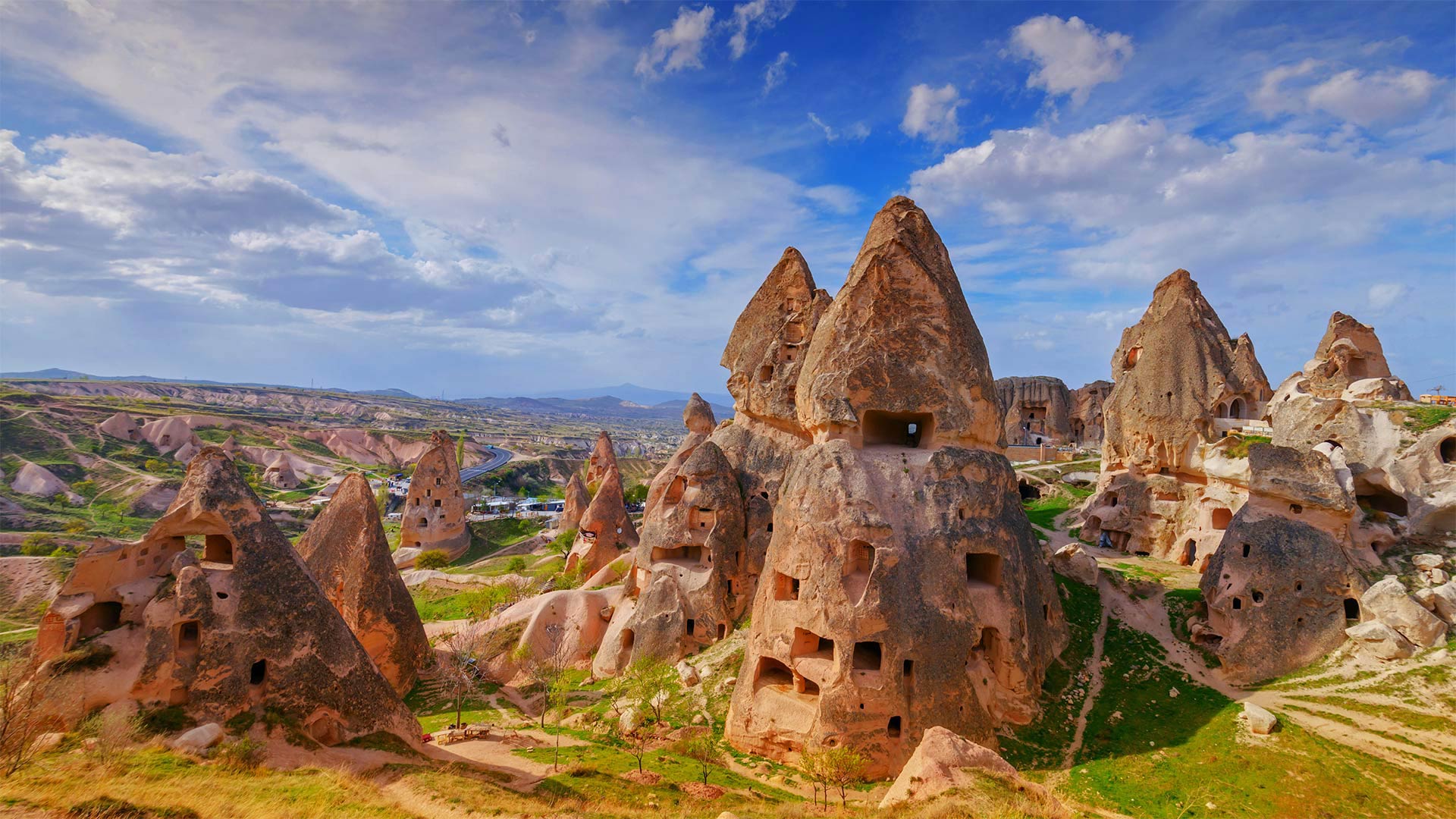土耳其棉花堡附近希腊古城希拉波利斯的剧院鸟瞰图 Aerial view of the theater at the ancient city of Hierapolis, adjacent to Pamukkale, Turkey (© Amazing Aerial Agency/Offset by Shutterstock)

土耳其棉花堡附近希腊古城希拉波利斯的剧院鸟瞰图 Aerial view of the theater at the ancient city of Hierapolis, adjacent to Pamukkale, Turkey (© Amazing Aerial Agency/Offset by Shutterstock)
Take in a show on your Roman holiday
In the hills around Pamukkale, Turkey, you'll find the ancient ruins of Hierapolis, which thrived here as holy and healing destination through Greek, Roman, and Ottoman times. The city was founded as a thermal spa in 190 BCE by Eumenes II, the king of Pergamon and was likely named after the wife of the legendary founder of the Pergamene dynasty, Hiero.
The amphitheater so prominent in this aerial view was built in the second century CE under Roman Emperor Hadrian. Renovated several times over the next 160 years—once to accommodate aquatic shows--the theater would have seated about 15,000 people. An earthquake in 1354 finally toppled the ancient city and it was abandoned until it was excavated by German archeologist Carl Humann in the 19th century. Today, the complex retains some of the best-preserved decorative features of any ancient Roman theater, with friezes of Roman Emperor Septimus Severus and his family, as well as the Greek gods Dionysus, Artemis, and Apollo.
“精灵烟囟”和窑洞,土耳其卡帕多西亚 Fairy chimneys and cave dwellings in Uçhisar, Cappadocia, Turkey (© Ivan Kmit/Alamy)

“精灵烟囟”和窑洞,土耳其卡帕多西亚 Fairy chimneys and cave dwellings in Uçhisar, Cappadocia, Turkey (© Ivan Kmit/Alamy)
And to think that I saw it in Cappadocia
The fantastical 'fairy chimneys' found in central Turkey's historic Cappadocia region were formed by a collision of the natural and the man-made—and they form a scene that seems straight out of a Dr. Seuss illustration. The landforms were created when volcanoes deposited mounds of soft, porous rock called tuff, which was later covered with hard basalt. In the 10th century (though possibly starting up to 5,000 years ago) humans excavated the tuff to create caves and catacombs that could fit thousands of dwellers. Through not only the astonishing ruins but the many 'cave hotels' hewn into rock in the city of Göreme, the memory of those ingenious city planners lives on.
But in fact, it's the memory of Dr. Seuss that brings us here today. On March 2, 1904, Seuss—real name Theodor Geisel—was born in Springfield, Massachusetts. The children's book creator—known for his quirky, bombastic poetry and fantastical pen-and-ink landscapes—passed away in 1991, but his birthday is still observed as a yearly celebration of literacy for kids and 'obsolete children' (as Seuss classified adults) everywhere.